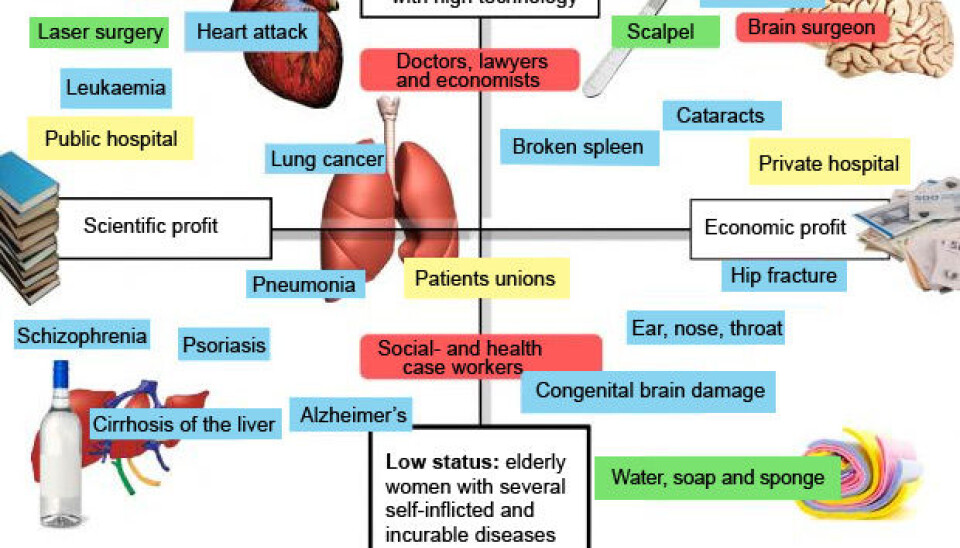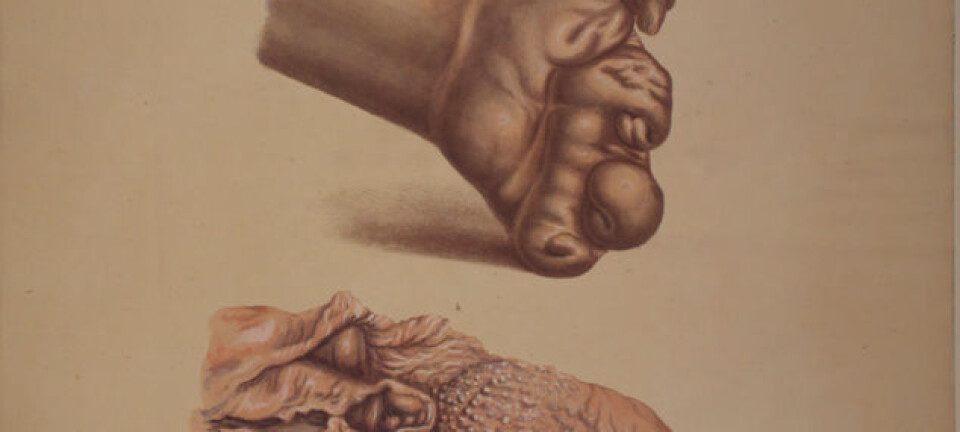
How cool is your disease?
In terms of prestige, doctors do not rank all diseases equally. Here’s a list of the ‘coolest’ and the ‘uncoolest’ diseases.
Newly qualified doctors are required to take an oath swearing to practice medicine ethically and honestly. This oath, known as the Hippocratic Oath, includes the pledge to give equal treatment to all patients.
But not all patient groups are equally placed in the medical hierarchy:
“If you’re a young man who has suddenly been struck by a spectacular disease which can be treated quickly with hi-tech tools, you can be pretty sure to be taken to a prestigious hospital and be treated by specialists,” says Kristian Larsen, professor at the Oslo and Akershus University College of Applied Sciences in Norway and associate professor at the Department of Education at Aarhus University, Denmark.
At the bottom of the hierarchy we find the elderly:
“On the other hand, an elderly woman with several competing diagnoses of self-inflicted diseases is more likely to be surrounded by low-skilled healthcare workers and low-tech medical equipment such as crutches, soap and a sponge.”
Larsen has created a model of the disease hierarchy based on his own fieldwork in hospitals and his colleague Dag Album’s studies of how Norwegian doctors and medical students rank diseases and medical specialties.
Generally speaking, the model shows that diseases at the bottom of the hierarchy are those believed to be caused by the patients themselves.
“There’s less respect for diseases we believe could be avoided had the patients followed the generally accepted guidelines about diet, smoking, alcohol and exercise,” he says.
“Diseases where it’s a bit harder to blame the patient can be found further up in the hierarchy – for instance if you’re suddenly struck with cancer or a heart attack.”
How Norwegian doctors rank diseases according to prestige
The most prestigious diseases:
- Heart attacks
- Leukaemia
- Broken spleen
- Brain tumour
- Testicular cancer
- Blood clots in the lung
- Cardiospasms
- Ectopic pregnancy (a pregnancy that develops outside the woman’s womb)
- Thyroid cancer
- Meniscus tear
The least prestigious diseases:
- Fibromyalgia
- Anxiety neuroses
- Cirrhosis of the liver
- Depressive neuroses
- Schizophrenia
- Anorexia
- AIDS
- Spastic paralysis
- Psoriasis
- Strokes
--------------------------------------
Read the Danish version of this article at videnskab.dk
Translated by: Dann Vinther
Scientific links
- "The prestige of illnesses and medical specialties", PubMed (1991), 106(8-9):232-6
- "Do diseases have a prestige hierarchy? A survey among physicians and medical students", Social Science & Medicine (2008), doi: 10.1016/








